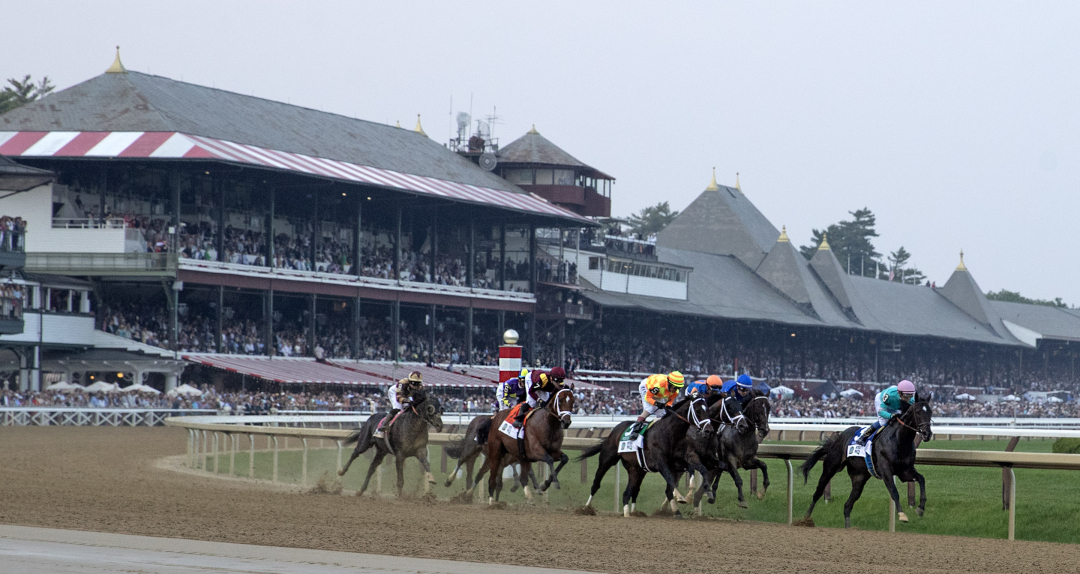Just before noon on Saturday, the New York Racing Association announced that its two Grade 1 grass races on the 14-race Belmont Stakes card would be moved to Sunday, while all of the remaining grass races on the card would be moved to the dirt.
With that, a blockbuster card appeared to be headed for a big-time bust.
Many horses scheduled to run in the grass races were scratched, leading to a three-horse field in the Wonder Again Stakes and a four-horse field in the concluding allowance. With the high-profile Grade 1 Jaipur and Grade 1 Manhattan removed from their slots in the card (the ninth and 12th races, respectively), all of the multi-leg bets ending in the Belmont – with the exception of those that linked Friday and Saturday races – were refunded and canceled.
In total, only 73 horses ran in the 12 races conducted on Saturday, for an average of 6.1 horses per race, compared to 110 horses on the 13-race Belmont card last year, an average of 8.5 horses per race.
So it was not surprising to see that total handle on Saturday’s revamped card declined 19.0 percent, from $125.75 million last year to $101.86 million this year. That was the lowest full-card total since the 2022 Belmont Stakes.
But hold up. Despite a 33.6 percent decline in the number of runners on the card, and despite the cancellation of a dozen wagers that can routinely total $15 million – when including the multi-leg bets and the exacta, trifecta, and superfecta bets that were canceled on the short fields – the figure actually looks pretty good at second glance.
Last year, the Jaipur handled $9.18 million, while the Manhattan drew $7.53 in bets. In addition, NYRA pared the stakes from its Saturday card in other ways, moving the Grade 1 Ogden Phipps to the Friday card and the Grade 3 Poker Stakes to the Thursday card. It’s a rough estimate, but the decisions forced by the overnight deluge and the earlier revamp of the card accounted for perhaps $30 million in handle, maybe more.
The only apples-to-apples comparison for the 2024 and 2025 cards was the same-race wagers on the Belmont Stakes itself – the pools for win, place, show, exacta, trifecta, and superfecta wagering. Handle in those pools was up 5.0 percent compared to last year, to $53.77 million from $51.19 million last year, even though this year’s Belmont had eight horses, compared to nine last year.
Obviously, handicappers had more money in their pockets to bet on the Belmont given the cancellation of the earlier bets and the slim pickings on a card that had far less interesting plays on it following the moves to dirt and the scratches. That probably accounts for most of the growth, though there’s something to be said for the match-up between Sovereignty and Journalism, a budding rivalry that seemed to divide horseracing fans in the lead-up to the race and may have influenced their enthusiasm to play the race.
All told, including all wagers ending in the race, handle on the Belmont this year was $55.46 million, an 8.94 percent decline compared to last year’s total of $60.91 million. But last year, total handle on the multi-race bets ending in the Belmont was $9.71 million, compared to a paltry $1.84 million this year on five daily doubles that survived the late cancellations.
The Jaipur and Manhattan, which were run on turf as the last two races on Sunday’s card, ended up drawing $2,492,186 and $5,348,349 in handle, respectively, for a total of $7,840,535, well below the $16.71 million the two races drew last year when on the Belmont Stakes card. Still, it’s entirely possible that the two races would have drawn even less if moved off the turf on Saturday. Moving the races off the turf would have also jeopardized the races’ grades and nullified the Breeders’ Cup “Win and You’re In” bonuses tied to them.
In the end, with the weather forcing NYRA to play a bad hand, the association may actually come out of the rain looking at a few silver linings.
:: Want to learn more about handicapping and wagering? Check out DRF's Handicapping 101 and Wagering 101 pages.

